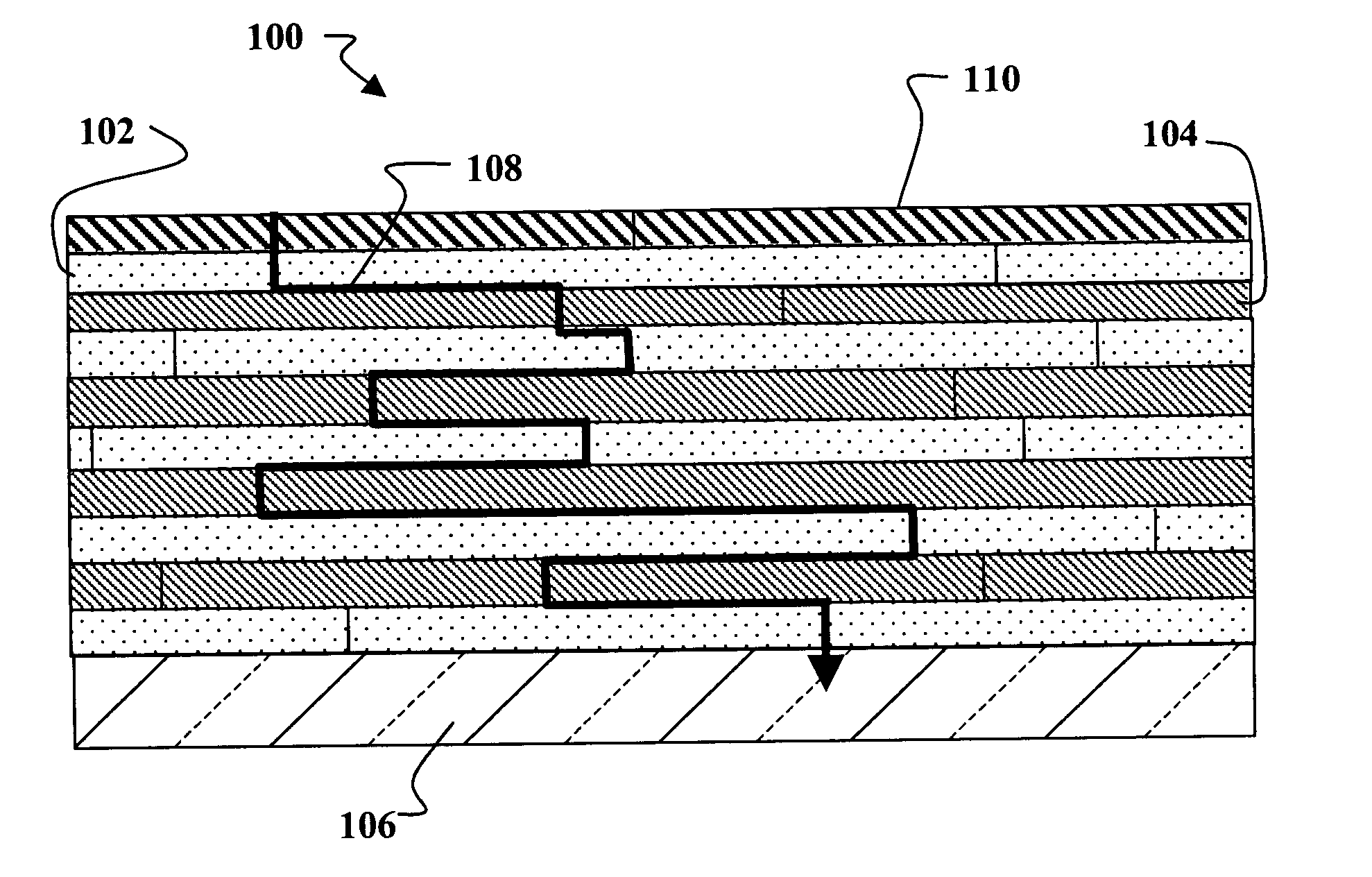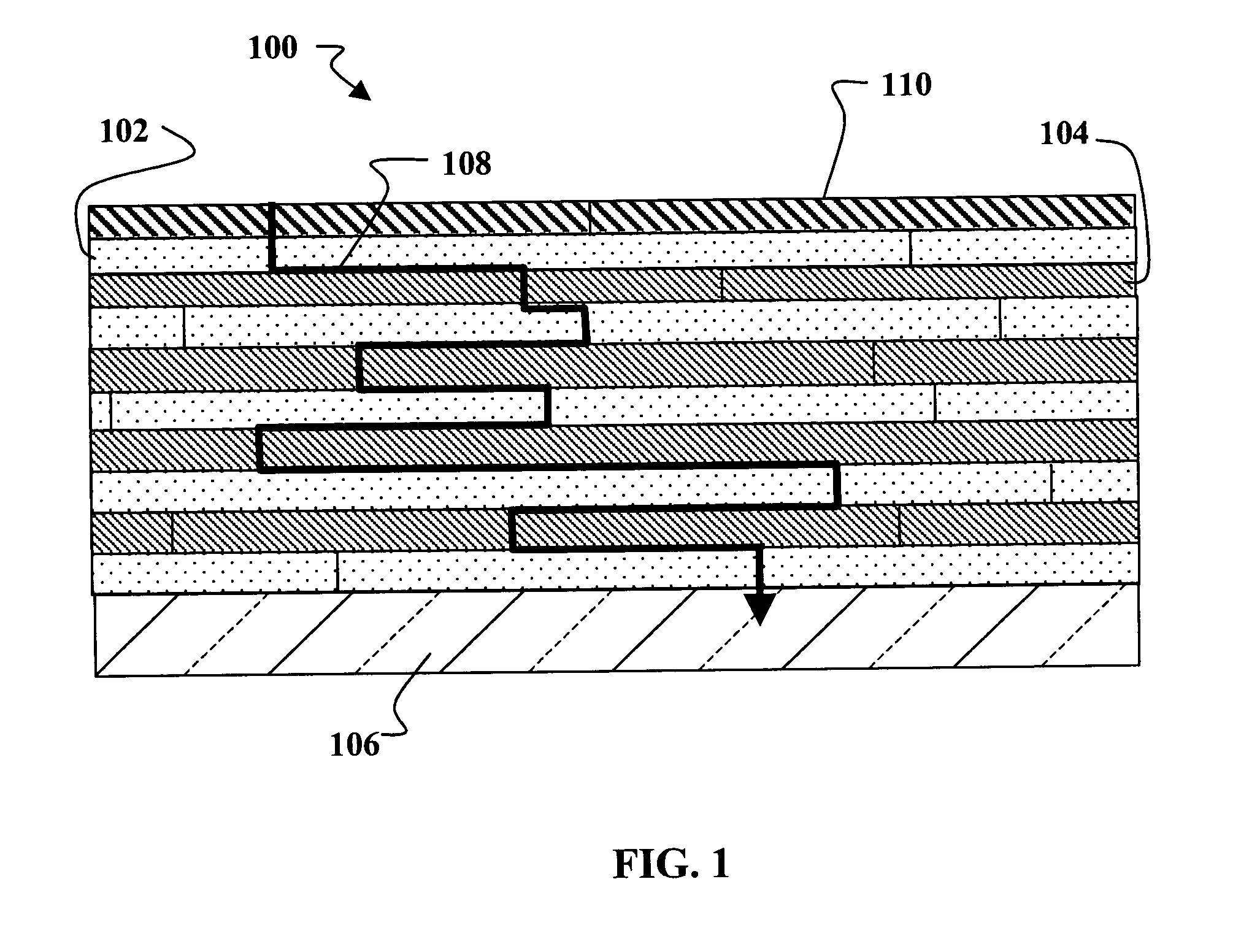Inorganic/organic hybrid nanolaminate barrier film
a nanolaminate and organic technology, applied in the field of barrier films, can solve the problems of low environmental resistance of commercially available plastics, glass is often undesirable, and the material is not optically transparent,
- Summary
- Abstract
- Description
- Claims
- Application Information
AI Technical Summary
Problems solved by technology
Method used
Image
Examples
Embodiment Construction
[0010] Although the following detailed description contains many specific details for the purposes of illustration, anyone of ordinary skill in the art will appreciate that many variations and alterations to the following details are within the scope of the invention. Accordingly, the exemplary embodiments of the invention described below are set forth without any loss of generality to, and without imposing limitations upon, the claimed invention.
[0011] Embodiments of the present invention are directed to an inorganic / organic hybrid barrier nanolaminate film and methods for making the film. The film 100, shown schematically in FIG. 1, generally includes multiple alternating layers of organic material 102 and inorganic material 104. The thickness of the inorganic layers 102 and organic layers 104 can be from about 0.1 nm to about 1 nm or from about 1 nm to about 10 nm or from about 1 nm to about 100 nm. The inorganic layers 102 can be silicates, although other inorganic materials ca...
PUM
| Property | Measurement | Unit |
|---|---|---|
| molar ratios | aaaaa | aaaaa |
| temperature | aaaaa | aaaaa |
| thickness | aaaaa | aaaaa |
Abstract
Description
Claims
Application Information
 Login to View More
Login to View More - R&D
- Intellectual Property
- Life Sciences
- Materials
- Tech Scout
- Unparalleled Data Quality
- Higher Quality Content
- 60% Fewer Hallucinations
Browse by: Latest US Patents, China's latest patents, Technical Efficacy Thesaurus, Application Domain, Technology Topic, Popular Technical Reports.
© 2025 PatSnap. All rights reserved.Legal|Privacy policy|Modern Slavery Act Transparency Statement|Sitemap|About US| Contact US: help@patsnap.com


